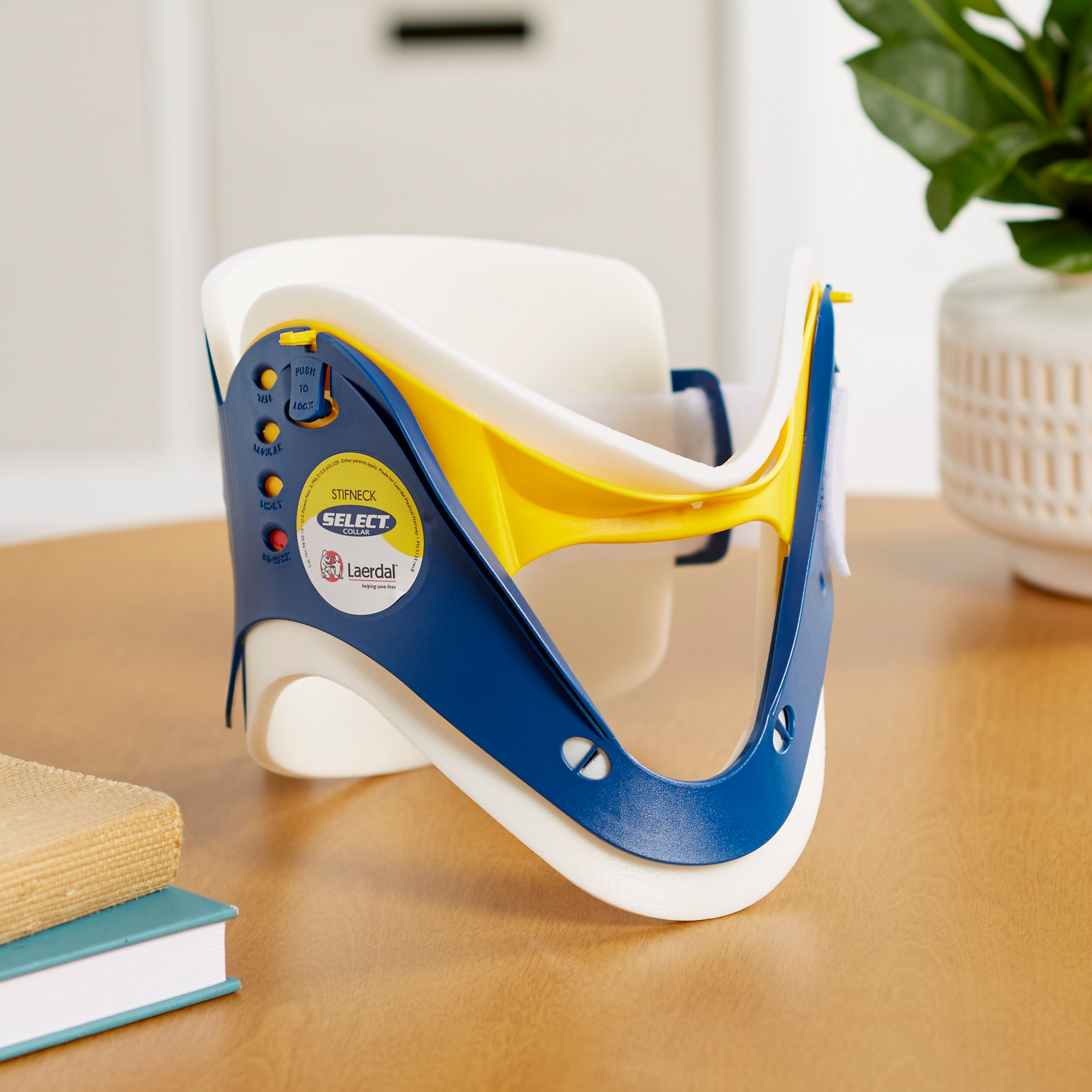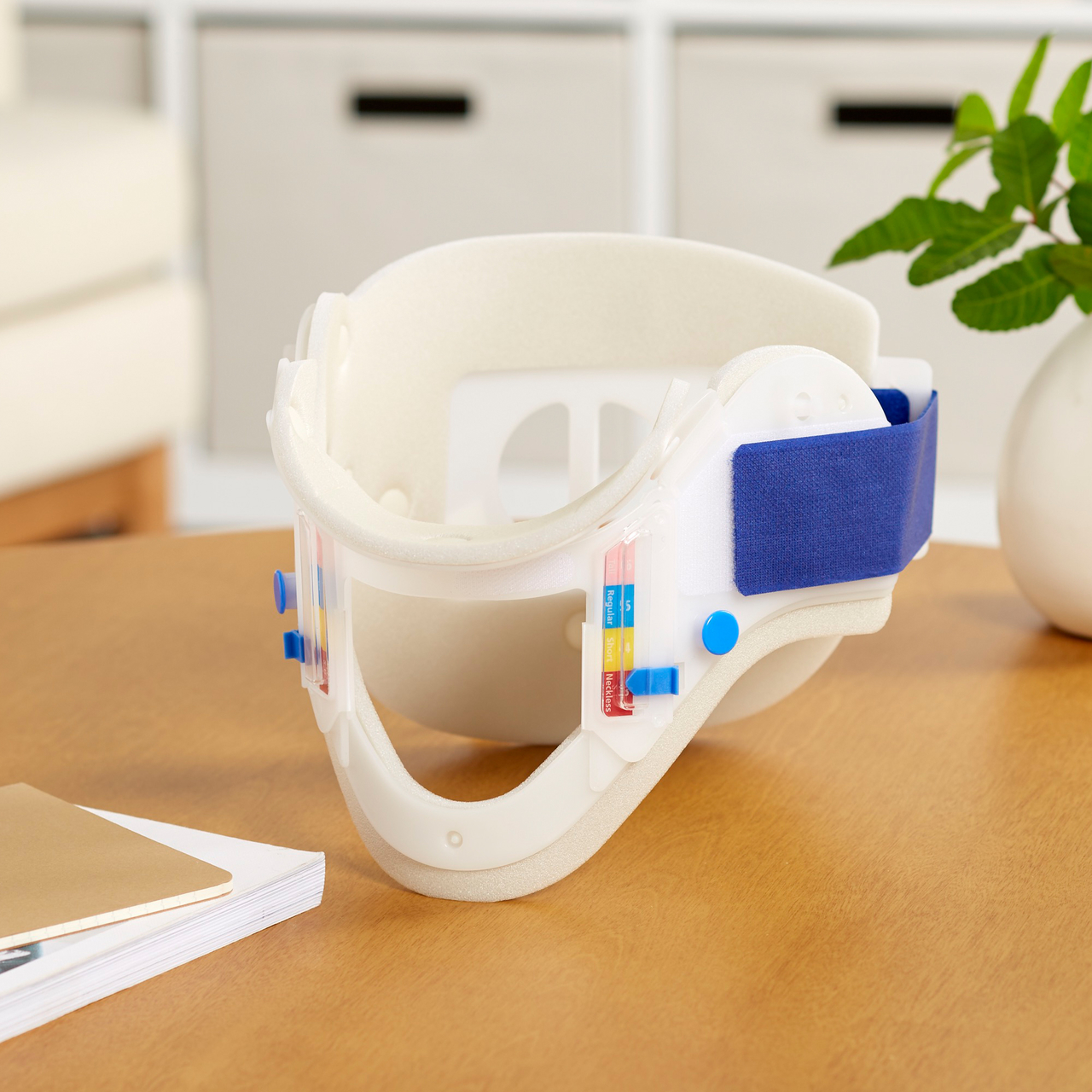How to Choose and Wear a Neck Brace
Wearing a neck brace can be awkward, even uncomfortable. But a neck brace performs an essential task: supporting your head and neck to relieve pain and promote healing.
How do you know if you need a neck brace? Always ask your healthcare provider for guidance. In some cases, wearing a cervical collar or neck brace is essential; in other cases, it can slow your recovery.
Types of Neck Braces and Supports
Soft cervical collars are typically made from foam or rubber. They’re worn snugly around the neck to support the head and spine. A soft neck collar doesn’t restrict all movement. While wearing one you can move your head forward and backward, but side-to-side movement is limited. Soft cervical collars are worn for minor neck injuries and neck pain.
Wire frame cervical collars have lightweight, rigid frames that support the head and neck.
Rigid neck braces are made from hard plastic, with padding on the inside. These neck braces limit your range of motion, immobilizing the head and neck. They’re typically worn after severe neck injuries or surgery, to allow the spine to heal.


Conditions That May Require a Neck Brace
Whiplash: Whiplash injury is caused by an abrupt back-and-forth movement of the neck. Symptoms may take a few days to appear after the injury, and include neck pain, reduced ability to move the neck, headaches, and pain in the shoulders, upper back and/or arms. Whiplash most commonly occurs in car accidents, especially rear-end collisions, but also can result from sports, assault, amusement park rides, and other causes.
Cervical fracture: There are seven cervical vertebrae in the neck, and a fracture in one of these vertebrae can be a serious injury. Complex fractures may require surgery, while minor cervical fractures are often treated by wearing a cervical collar or neck brace for a prescribed amount of time.
Cervical spondylosis or arthritis of the neck: Most people, as they age, experience some degeneration of bones and cartilage in the neck and spine. Cervical spondylosis is the general term for this condition, which can involve dehydrated or herniated spinal disks, bone spurs, or stiffened ligaments.
Cervical radiculopathy or pinched nerve: Injury or age-related degeneration of the spine can compress a nerve in the neck, causing pain, muscle weakness and/or numbness. Some people with pinched nerves feel no symptoms, while others feel sharp pain in the neck and arm. Wearing a soft cervical collar can allow the muscles in your neck to rest and decrease the pinching of the nerve roots that causes pain.
Neck/spinal surgery: If you undergo a surgical procedure that involves the neck, you’ll probably have to wear a cervical collar or neck brace afterward while you heal. Examples of surgeries that may require a neck brace include:
- Spinal fusion
- Laminotomy
- Foraminotomy
- Laminectomy
Tips for Wearing a Neck Brace
Because the neck and spine are delicate and easily injured, it’s essential to talk to your healthcare provider about how to wear a cervical collar or neck brace correctly.
- Neck braces are rarely used long-term. Doctors believe that wearing a neck brace or cervical collar for too long can weaken the muscles of the neck and inhibit healing. Follow your healthcare provider’s instructions about how long to wear the brace and when to resume normal activities.
- When wearing a cervical collar or neck brace while sleeping, make sure your neck is aligned with your body.
- Pay attention to your posture while wearing a neck brace. Align your ears with your shoulders; don’t slouch forward.
- Walking can be beneficial, if your healthcare provider gives you the OK. However, you should avoid strenuous exercise or lifting heavy objects, because that can strain the neck muscles.
- Wash your cervical collar, or the fabric pads of your neck brace, daily with gentle soap and water. Neck braces get dirty quickly, and can cause skin irritation.
- With your healthcare provider’s approval, you can take your neck brace or cervical collar off when you shower. While you do so, limit your neck motions.

Related Products
Source
Cervical Neck Fractures, Causes and Treatments (VeryWell Health)
Cervical Radiculopathy (Pinched Nerve) (OrthoInfo)
Cervical Spondylosis (Mayo Clinic)
Post-Operative Instructions after Cervical Spine Surgery (Denver Spine Surgeons)
Tips for Wearing, Cleaning, Sleeping, & Bathing with A Neck Brace (Cervical Collar) (Bob & Brad)
What Is a Cervical Collar Used For and Are There Side Effects? (Healthline)

